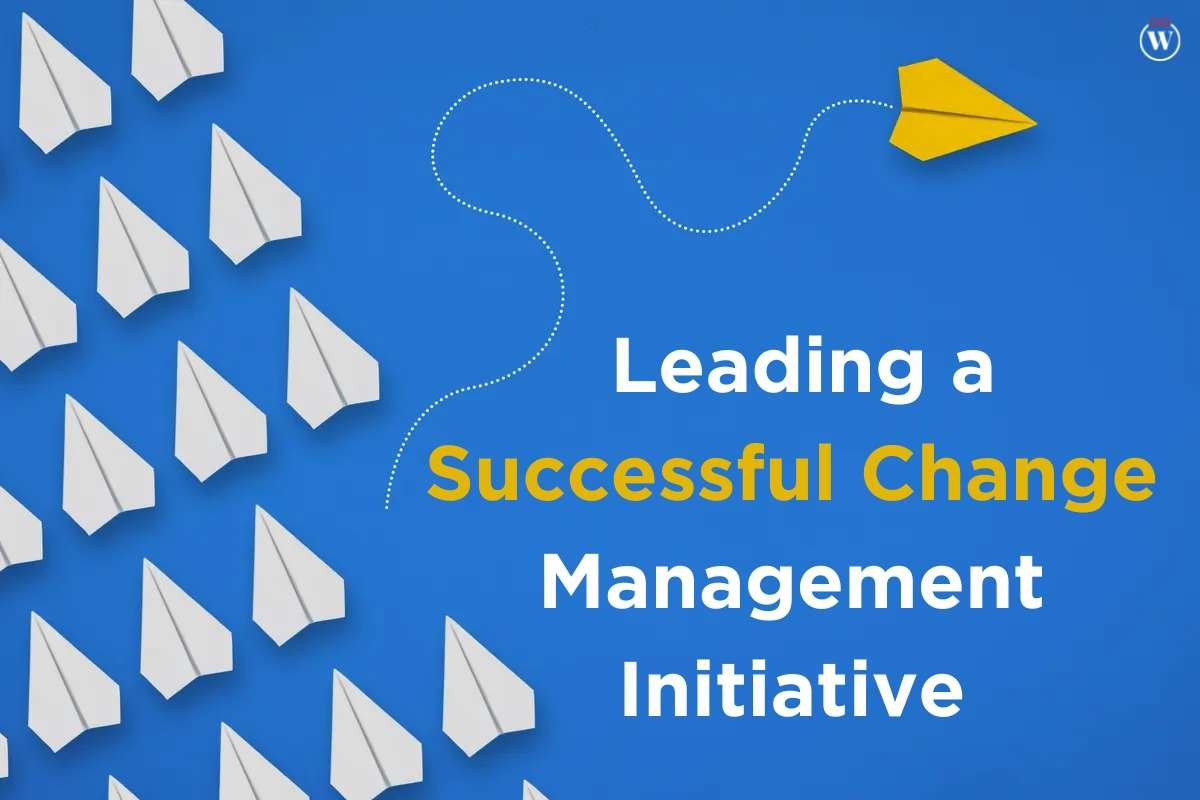Organizational change is an inevitable scenario these days. Business leaders need to be prepared for it in order to be able to adapt to the changes. A lot of organizations implement the change management initiative to bring in new methods and technologies for better performance. A change in the work structure brings in new avenues for organizations to understand and adopt.
Some changes are small while some are quite big which need to be well-understood by the seniors first. A business leader needs to put his employees into the practice of getting used to the change. At times the changes may be so big that the organization makes modifications to its vision and mission statements too. A whole makeover process is undertaken by the organization.
To be in the competition, and survive in the market as a brand, the firm may need to implement change management initiative.
Read these 7 Strategies for Leading a Successful Change Management Initiative:
1. Clear and Compelling Vision
A successful change management initiative begins with a clear and compelling vision. This vision should outline the goals and objectives of the change, illustrating the benefits it will bring to the organization. When employees understand why change is necessary and what it aims to achieve, they are more likely to embrace it.

Why It Matters:
A well-articulated vision provides a roadmap for the change, aligning everyone in the organization towards a common goal. It inspires confidence and trust in the change process.
2. Strong Leadership and Sponsorship
Change management initiatives require strong leadership and sponsorship from top-level executives. Leaders must champion the change, demonstrating their commitment and actively participating in the transformation. Their influence and support trickle down to all levels of the organization.
Why It Matters:
Leaders set the tone for change, and their visible support reassures employees and helps maintain momentum throughout the initiative.
3. Comprehensive Change Readiness Assessment
Before embarking on a change management initiative, organizations must conduct a thorough change readiness assessment. This assessment identifies potential barriers, assesses the organization’s readiness for change, and gauges employee sentiment. It provides essential insights into potential challenges and allows for proactive planning.
Why It Matters:
Understanding the organization’s readiness and potential obstacles helps tailor the change management approach, addressing specific concerns and increasing the likelihood of success.
4. Effective Communication Strategy
Communication is a cornerstone of successful change management initiatives. Organizations must develop an effective communication strategy that includes consistent messaging, transparency, and engagement with employees at all levels. Communication should occur early and continue throughout the initiative.
Why It Matters:
Effective communication keeps employees informed, reduces uncertainty, and builds trust. It also allows for feedback, addressing concerns and promoting a sense of involvement.
5. Customized Training and Development
Implementing change often requires employees to acquire new skills and adapt to new processes. Customized training and development programs should be designed to equip employees with the necessary competencies and knowledge to thrive in the transformed environment.

Why It Matters:
Training and development ensure that employees can effectively contribute to the change initiative, reducing resistance and enhancing the organization’s overall capabilities.
6. Continuous Monitoring and Adaptation
Change management initiatives are dynamic processes. Organizations should continuously monitor progress, gather feedback, and be prepared to adapt their approach as needed. Regular assessment helps identify issues early and make timely adjustments.
Why It Matters:
Continuous monitoring allows organizations to stay agile, responding to changing circumstances and ensuring the initiative remains on track.
7. Celebration of Milestones and Successes
Recognizing and celebrating milestones and successes throughout the change initiative is crucial for morale and motivation. Acknowledging achievements, no matter how small, reinforces the positive aspects of change.
Why It Matters:
Celebration fosters a sense of accomplishment and keeps employees engaged and motivated throughout the change journey.
Factors to Consider Before Implementing a Change Management Initiative;
Before launching a change management initiative, organizations should consider several critical factors:
- Organizational Culture:

Assess the current organizational culture to determine its receptivity to change. A culture that values innovation and adaptability may require different change management strategies than a more traditional culture.
- Resource Allocation:
Ensure that adequate resources, including time, budget, and personnel, are allocated to the change initiative. A lack of resources can hinder progress and lead to frustration.
- Stakeholder Involvement:
Identify key stakeholders and involve them in the change process from the outset. Their perspectives and input can provide valuable insights and support.
- Risk Analysis:
Conduct a thorough risk analysis to identify potential obstacles and develop contingency plans. Being prepared for potential challenges can prevent roadblocks from derailing the initiative.
When to Implement a Change Management Initiative
The timing of a change management initiative is critical. Organizations should consider initiating change when:
- They face a significant shift in the external business environment, such as market changes or technological advancements.
- There is a need to improve operational efficiency or competitiveness.
- Employee dissatisfaction, turnover, or resistance to existing processes becomes a concern.
- The organization seeks to implement new technologies or business models.
- Training employees to adapt to change
Training employees to adapt to change is a multifaceted process:
- Assessment:
Begin by assessing the skills and knowledge gaps that need to be addressed as a result of the change.
- Customization:
Tailor training programs to specific employee needs, ensuring that content is relevant and engaging.
- Engagement:
Involve employees in the learning process, encouraging active participation and providing opportunities for practice.
- Feedback:
Continuously gather feedback from employees to identify areas for improvement and make necessary adjustments to the training.
- Support:
Offer ongoing support and resources to employees as they transition to the new way of working, providing guidance and addressing challenges promptly.
Conclusion
Leading a successful change management initiative requires a strategic approach, meticulous planning, and a commitment to adaptability. Organizations that effectively implement these seven strategies, consider essential factors beforehand, choose the right timing, and invest in employee training will be better equipped to navigate change successfully. Change management initiatives are not merely about adapting to new processes; they are about fostering a culture of agility, resilience, and continuous improvement. By embracing change as an opportunity for growth and development, organizations can position themselves for long-term success in an ever-evolving business landscape.








